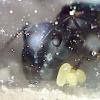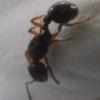If I had the choice, I'd keep two species.
Messor and Diacamma.
Messor is harvester ants that chew seeds and then mix it with their saliva to make a bread which they store to eat later. They are easy to control and care for. Just control amount of seeds you give them and you control their colony size. No insect part building up in their nests. You don't even need to give them sugar water.
Diacamma is hunting ants. They have exceptionally good eye sight. They are big and aggressive enough to take a whole mealworm and eat it without any difficulty which ultimately means you just throw a mealworm or two and they will be happy.
Both species are easy to care for and have special behaviors. However, Diacamma needs a big outworld since they hunt. They get stressed if they can't run around.
Edited by dean_k, April 16 2015 - 10:32 AM.




















